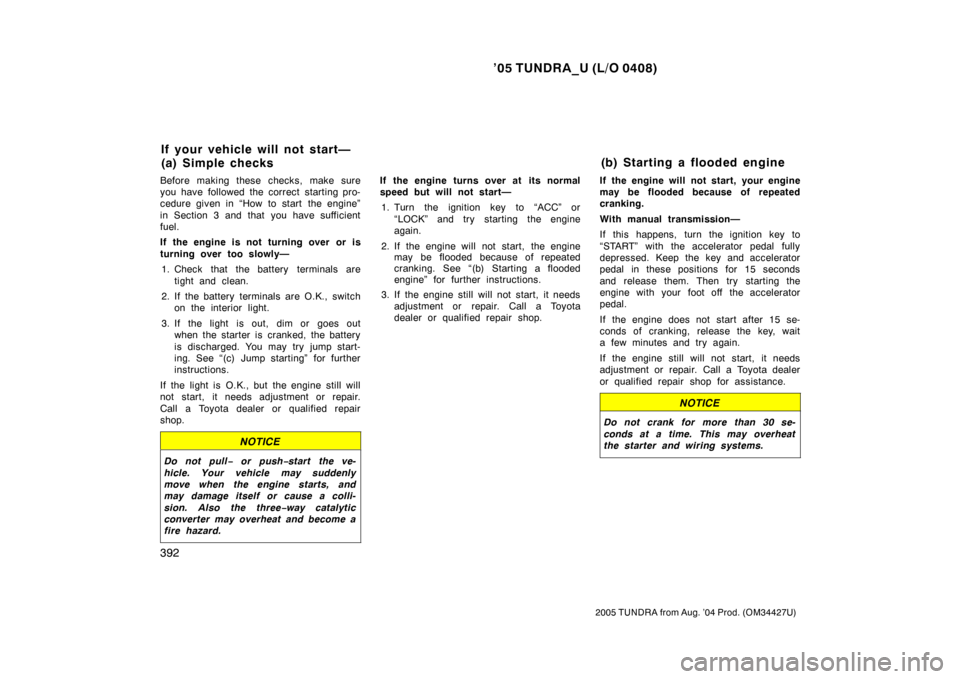’05 TUNDRA_U (L/O 0408)
392
2005 TUNDRA from Aug. ’04 Prod. (OM34427U)
Before making these checks, make sure
you have followed the correct starting pro-
cedure given in “How to start the engine”
in Section 3 and that you have sufficient
fuel.
If the engine is not turning over or is
turning over too slowly—
1. Check that the battery terminals are tight and clean.
2. If the battery terminals are O.K., switch on the interior light.
3. If the light is out, dim or goes out when the starter is cranked, the battery
is discharged. You may try jump start-
ing. See “(c) Jump starting” for further
instructions.
If the light is O.K., but the engine still will
not start, it needs adjustment or repair.
Call a Toyota dealer or qualified repair
shop.
NOTICE
Do not pull − or push−start the ve-
hicle. Your vehicle may suddenly
move when the engine starts, and
may damage itself or cause a colli-
sion. Also the three −way catalytic
converter may overheat and become a
fire hazard.
If the engine turns over at its normal
speed but will not start—
1. Turn the ignition key to “ACC” or “LOCK” and try starting the engine
again.
2. If the engine will not start, the engine may be flooded because of repeated
cranking. See “(b) Starting a flooded
engine” for further instructions.
3. If the engine still will not start, it needs adjustment or repair. Call a Toyota
dealer or qualified repair shop. If the engine will not start, your engine
may be flooded because of repeated
cranking.
With manual transmission—
If this happens, turn the ignition key to
“START” with the accelerator pedal fully
depressed. Keep the key and accelerator
pedal in these positions for 15 seconds
and release them. Then try starting the
engine with your foot off the accelerator
pedal.
If the engine does not start after 15 se-
conds of cranking, release the key, wait
a few minutes and try again.
If the engine still will not start, it needs
adjustment or repair. Call a Toyota dealer
or qualified repair shop for assistance.
NOTICE
Do not crank for more than 30 se-
conds at a time. This may overheat
the starter and wiring systems.
If your vehicle will not start—
(a) Simple checks
(b) Starting a flooded engine
